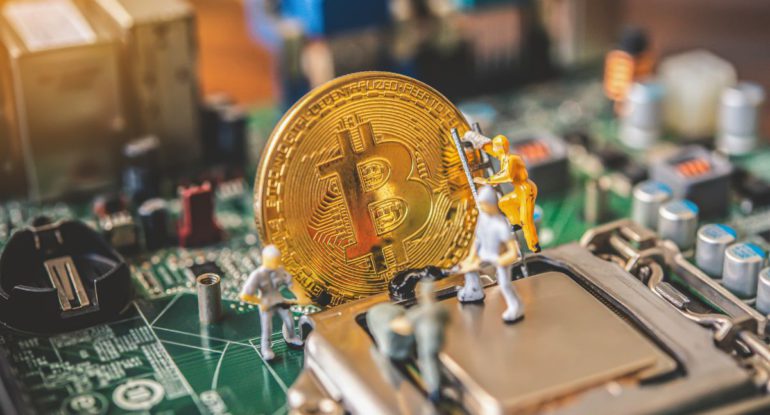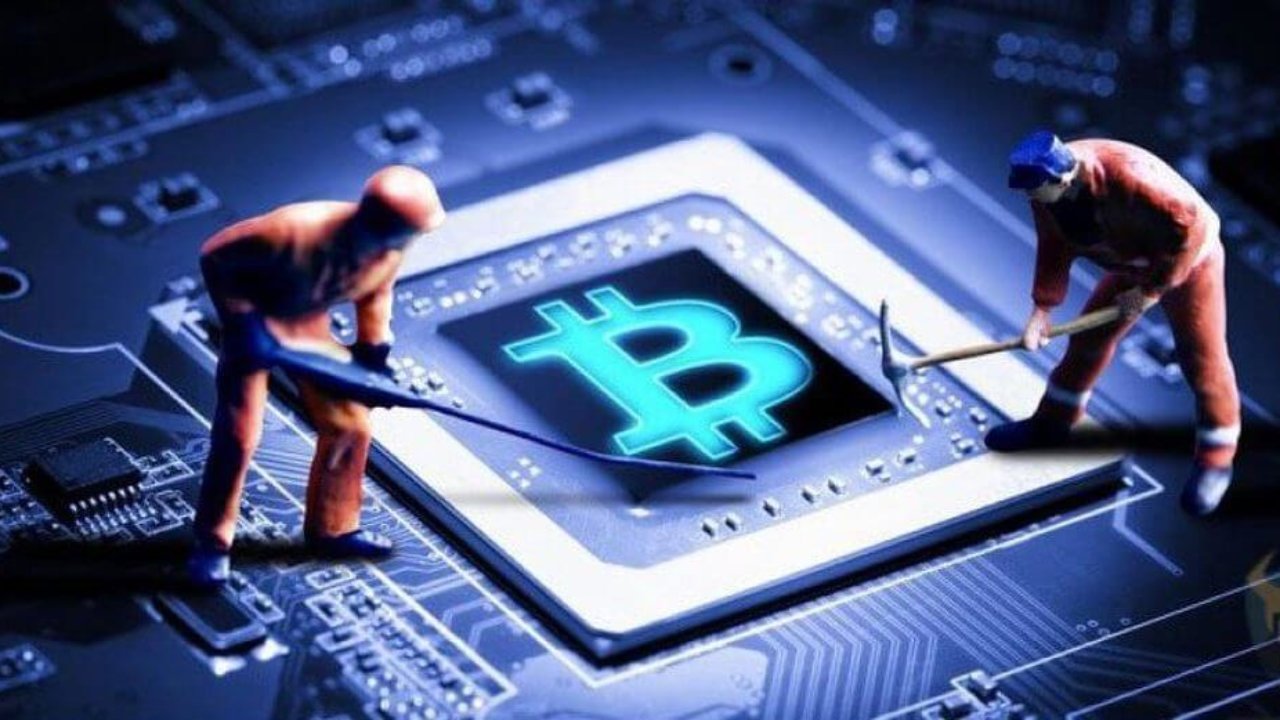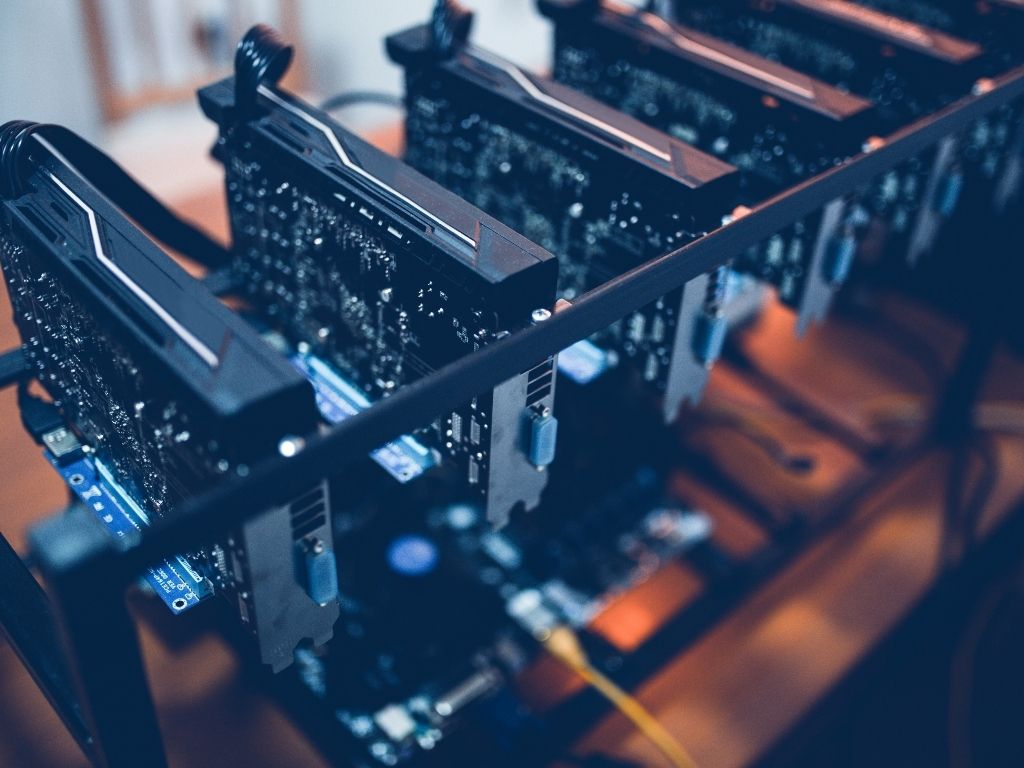Who Are Bitcoin Miners And What Is The Best Way To Hire Them?

In the intricate realm of cryptocurrency, Bitcoin miners play a pivotal role in the functioning and security of the network. As the backbone of the decentralized nature of Bitcoin, miners engage in a complex process that involves validating transactions, securing the network, and minting new bitcoins. This article aims to delve into the world of Bitcoin miners, understanding their significance, and exploring the mechanisms involved in hiring or engaging their services.
Understanding the Role of Bitcoin Miners:

Bitcoin, the pioneer of cryptocurrencies, operates on a decentralized network that relies on a crucial group of participants known as miners. The role of Bitcoin miners is foundational to the functioning, security, and integrity of the entire Bitcoin network. In this exploration, we delve into the intricacies of their role, shedding light on the multifaceted contributions that miners make to the world of digital currencies.
I. Transaction Validation: The Genesis of Mining
**1. Transaction Propagation: The journey of a Bitcoin transaction begins when a user initiates a transfer of funds. This transaction is then broadcasted to the entire Bitcoin network, awaiting validation.
**2. Mining Pools and Individual Miners: Bitcoin miners, whether acting individually or as part of mining pools, collect these transactions. Mining pools are collaborative groups of miners who combine their computational power to increase their chances of successfully mining a block.
**3. Transaction Bundling: The collected transactions are bundled together into blocks. Each block contains a set of transactions waiting to be added to the blockchain.
**4. Proof-of-Work Consensus: Mining involves solving complex mathematical puzzles, a process known as Proof-of-Work (PoW). Miners compete to be the first to solve these puzzles and validate a block of transactions.
II. Securing the Network: The Immutable Blockchain
**1. Immutability Through Difficulty: As blocks are added to the blockchain, they become increasingly difficult to alter. This property ensures the immutability of the transaction history, making it highly resistant to tampering.
**2. Consensus for Security: The decentralized nature of Bitcoin’s PoW consensus mechanism ensures that no single entity can control the majority of the network. This decentralization, coupled with the cryptographic security of the blockchain, creates a robust and secure system.
**3. Preventing Double Spending: Bitcoin miners play a pivotal role in preventing the double-spending problem. By validating transactions and securing them in blocks, miners ensure that a single bitcoin cannot be spent more than once.
III. Rewards and Incentives: The Economics of Mining
**1. Block Rewards: Successfully mining a block comes with a reward in the form of newly minted bitcoins. This process is crucial for introducing new bitcoins into circulation.
**2. Transaction Fees: In addition to block rewards, miners earn transaction fees from the transactions included in the blocks they mine. Users voluntarily attach fees to their transactions to incentivize miners to prioritize them.
**3. Economic Incentives: The economic model of Bitcoin mining aligns incentives, motivating miners to dedicate computational power and resources to the network. The potential for financial gain encourages miners to participate in the PoW process.
IV. The Mining Process: A Technological Ballet
**1. Hashrate and Computational Power: Mining involves solving complex cryptographic puzzles, requiring significant computational power. Hashrate, measured in hashes per second, represents the computational power dedicated to solving these puzzles.
**2. Mining Difficulty: The difficulty of the puzzles adjusts approximately every two weeks to maintain a consistent block time. This adjustment ensures that new blocks are added to the blockchain approximately every ten minutes.
**3. Hardware and Energy Consumption: Mining hardware, ranging from CPUs to specialized ASICs (Application-Specific Integrated Circuits), plays a pivotal role. However, the energy-intensive nature of mining has sparked discussions about its environmental impact.
Also, read – Your Ultimate Guide To Zero Fee Bitcoin Ordinals- Significance And Potential Impact
The Process of Hiring Bitcoin Miners:

Entering the world of Bitcoin mining involves more than just acquiring the necessary hardware and joining a mining pool. The process of hiring Bitcoin miners encompasses various approaches, each with its own set of considerations and complexities. In this exploration, we unveil the intricacies of engaging with Bitcoin miners, whether through mining pools, cloud mining services, or direct hardware ownership.
I. Mining Pools: Collaborative Power for Enhanced Efficiency
**1. Understanding Mining Pools: Mining pools are collaborative groups of miners who combine their computational power to increase their chances of successfully mining a block. Joining a mining pool allows individual miners to contribute their resources to the collective effort, reducing the variance in rewards.
**2. Selecting a Mining Pool: Choosing the right mining pool involves considering factors such as the pool’s hashrate, fee structure, and reputation. Pools with higher hashrates generally have a better chance of successfully mining blocks, but fees and payout mechanisms vary.
**3. Setting Up: To join a mining pool, miners need to set up mining software compatible with the chosen pool. This involves configuring mining parameters, including the pool’s address, the miner’s wallet address, and other relevant settings.
**4. Collective Rewards: Mining pool participants share the rewards based on their contributed computational power. While rewards are distributed more frequently, they are divided among all pool members, providing a steadier income stream.
II. Cloud Mining Services: Remote Access to Mining Power
**1. Introduction to Cloud Mining: Cloud mining services offer an alternative for individuals or companies that lack the technical expertise or infrastructure for hardware mining. These services allow users to rent mining equipment remotely, essentially “hiring” the mining power of the service provider.
**2. Selecting a Cloud Mining Service: Choosing a reliable cloud mining service is crucial. Factors to consider include the provider’s reputation, transparency about fees, and the terms of the mining contracts offered. Investigating user reviews and industry reputation is essential before entering into any agreements.
**3. Contracts and Payments: Cloud mining services typically offer contracts specifying the duration and amount of computational power users wish to lease. Users pay upfront or on an ongoing basis for the rented mining power. Returns are often proportional to the invested computational resources.
**4. Remote Management: Cloud mining eliminates the need for users to set up and manage physical mining hardware. Instead, they remotely access and monitor the mining equipment hosted by the service provider.
III. Mining Contracts: Tailoring Engagement to Specific Needs
**1. Introduction to Mining Contracts: Mining contracts provide a structured way for companies or individuals to engage with Bitcoin miners. These contracts define the terms of the engagement, including the duration, computational power provided, and the distribution of rewards.
**2. Contract Types: Mining contracts come in various forms, ranging from short-term contracts to long-term agreements. Users can tailor contracts to their specific needs, adjusting the duration and amount of computational power leased.
**3. Choosing a Contract: When selecting a mining contract, users need to carefully consider the terms, fees, and potential returns. The chosen contract should align with the user’s goals, whether seeking short-term gains or a more sustained mining operation.
IV. Hardware Purchase and Hosting: Hands-On Approach to Mining
**1. Direct Hardware Ownership: Some entities prefer a hands-on approach and opt to purchase mining hardware directly. This involves acquiring specialized equipment designed for Bitcoin mining, such as ASICs (Application-Specific Integrated Circuits).
**2. Setting Up and Configuration: After purchasing the hardware, users need to set it up and configure the mining software. This involves connecting the hardware to the Bitcoin network, selecting a mining pool, and configuring other relevant parameters.
**3. Consideration of Hosting Services: While some users set up and manage their mining hardware independently, others opt for hosting services. These services allow users to place their mining hardware in a facility with the necessary infrastructure, ensuring optimal mining conditions.
**4. Costs and Returns: Direct hardware ownership entails upfront costs for purchasing equipment, ongoing electricity expenses, and potential maintenance costs. Users must conduct a comprehensive cost-benefit analysis to gauge potential returns based on the current mining difficulty and Bitcoin prices.
V. Factors to Consider when Hiring Bitcoin Miners: Making Informed Decisions
**1. Mining Power and Hashrate: The hashrate, representing the computational power dedicated to solving cryptographic puzzles, is a critical factor to consider. Higher hashrates increase the likelihood of successfully mining blocks.
**2. Cost Structure: Different mining services and contracts have varied cost structures. Users need to consider factors such as upfront costs, maintenance fees, and any additional charges associated with the chosen mining arrangement.
**3. Reputation and Reliability: The reputation and reliability of a mining pool, cloud mining service, or hardware provider are crucial considerations. User reviews, industry reputation, and the track record of the service contribute to the overall assessment of trustworthiness.
**4. Mining Difficulty: Understanding the current mining difficulty is imperative, as it directly impacts the competition among miners and, consequently, the potential returns. A higher mining difficulty requires more computational power to mine blocks successfully.
**5. Duration of Engagement: Depending on goals and preferences, individuals or companies may opt for short-term or long-term engagements with Bitcoin miners. The duration of engagement influences the type of contracts or services chosen.
Factors to Consider when Hiring Bitcoin Miners:

Entering the realm of Bitcoin mining involves more than just diving into the technicalities of blockchain and cryptographic puzzles. Whether you’re considering joining a mining pool, opting for cloud mining services, entering into mining contracts, or embracing direct hardware ownership, a thoughtful consideration of several factors is paramount. This exploration unveils the intricate web of considerations to navigate when hiring Bitcoin miners, ensuring informed decisions in the ever-evolving landscape of cryptocurrency mining.
I. Mining Power and Hashrate: The Computational Backbone
**1. Understanding Hashrate: Hashrate, measured in hashes per second (H/s), represents the computational power dedicated to solving the cryptographic puzzles required in Bitcoin mining. A higher hashrate increases the likelihood of successfully mining blocks, contributing to more consistent rewards.
**2. Balancing Computational Power: The choice of mining pool, cloud mining service, or hardware provider significantly influences the hashrate at your disposal. Assess the computational power offered and consider your goals, as higher hashrates often come with higher costs.
**3. Impact on Returns: The relationship between hashrate and potential returns is direct. A higher hashrate increases the probability of successfully mining blocks and earning rewards. However, it also comes with increased competition, especially in a landscape where mining difficulty adjusts regularly.
II. Cost Structure: Navigating the Financial Landscape
**1. Upfront Costs: Different mining services and contracts come with varied upfront costs. Consider the initial investment required for joining a mining pool, entering into a mining contract, or purchasing and setting up mining hardware.
**2. Maintenance Fees: Some mining arrangements involve ongoing maintenance fees. These fees cover the costs of managing hardware, maintaining facilities, and ensuring optimal mining conditions. Carefully scrutinize the fee structures associated with the chosen mining approach.
**3. Electricity Expenses: For those engaged in hardware mining or hosting services, electricity expenses form a significant portion of the overall costs. Research the energy efficiency of your mining setup and assess the impact of electricity costs on your potential returns.
**4. Additional Charges: Beyond upfront costs and maintenance fees, be vigilant about any additional charges that may apply. Some services impose transaction fees, withdrawal fees, or other hidden costs that can impact the overall profitability of your mining venture.
III. Reputation and Reliability: Trust in the Mining Ecosystem
**1. Mining Service Reputation: Investigate the reputation of the mining pool, cloud mining service, or hardware provider you are considering. User reviews, testimonials, and experiences shared by others in the community offer valuable insights into the reliability and trustworthiness of the service.
**2. Industry Track Record: Assess the track record of the mining service or provider within the industry. Consider factors such as how long they have been operational, their historical performance, and their adherence to promised terms and conditions.
**3. Transparency: Transparency is a crucial element in evaluating the trustworthiness of a mining service. Look for providers who are clear and transparent about their fee structures, contracts, and any other pertinent information. Transparent communication builds trust within the mining community.
IV. Mining Difficulty: Adapting to the Competitive Landscape
**1. Understanding Mining Difficulty: Mining difficulty is a dynamic parameter that adjusts approximately every two weeks in the Bitcoin network. It is a measure of how challenging it is to find a new block. A higher mining difficulty indicates increased competition among miners.
**2. Impact on Competition: Consider the current mining difficulty when planning your engagement with Bitcoin miners. A higher mining difficulty means increased competition for successfully mining blocks, impacting the potential returns on your mining investment.
**3. Regular Adjustments: Mining difficulty adjustments are designed to maintain a consistent block time of approximately ten minutes. Be aware of these regular adjustments and factor them into your calculations, adapting your strategy to the changing competitive landscape.
V. Duration of Engagement: Aligning with Your Goals
**1. Short-Term vs. Long-Term Goals: Define your goals and align them with the duration of engagement you are comfortable with. Short-term engagements may suit those looking for quick returns, while long-term commitments provide stability and sustained participation in the mining ecosystem.
**2. Flexibility and Scalability: Choose a mining approach that allows flexibility and scalability according to your evolving goals. Some users may start with smaller commitments and gradually scale up, adapting to changes in market conditions and personal preferences.
**3. Contract Types: Understand the types of contracts offered by mining services. Whether you opt for short-term contracts, open-ended contracts, or contracts with specific durations, ensure they align with your expectations and risk tolerance.
🟧 The BM 8 week plan:
•256
– Keep building connections and giving support
– Provide as much bespoke value to holders as we possibly canCommunity
– Provide as much education and knowledge for the Bitcoin and Ordinals communities as we possibly canProject DING
– Something… pic.twitter.com/iYyQszvcHF— Bitcoin Miners 🟧 (@BitcoinMiners_) July 17, 2023
Challenges and Considerations in Bitcoin Mining:

Bitcoin mining, while holding the promise of financial rewards and network security, is not without its set of challenges and considerations. From the environmental concerns surrounding energy consumption to the volatility of Bitcoin prices, miners must navigate a complex landscape. This exploration unveils the multifaceted challenges and crucial considerations that shape the path of Bitcoin miners, highlighting the need for adaptability and strategic foresight.
I. Volatility of Bitcoin Prices: Riding the Market Rollercoaster
**1. Market Sensitivity: Bitcoin prices exhibit a high degree of volatility, with significant fluctuations occurring over short periods. The value of mined bitcoins is directly influenced by these price variations, impacting the overall profitability of mining operations.
**2. Impact on Profitability: Miners face the challenge of predicting and adapting to the dynamic nature of Bitcoin prices. While surges in price can lead to substantial profits, downturns can diminish the profitability of mining ventures, especially for those with high operational costs.
**3. Risk Mitigation Strategies: Effective risk mitigation strategies are essential for miners. This may involve implementing hedging mechanisms, diversifying holdings, or adopting a cautious approach to operational expenses during periods of market uncertainty.
II. Energy Costs and Sustainability: Environmental Crossroads
**1. Energy-Intensive Nature: Bitcoin mining is notorious for its energy-intensive nature, with miners globally competing to solve complex mathematical puzzles. The Proof-of-Work (PoW) consensus mechanism, while securing the network, contributes to a significant carbon footprint.
**2. Environmental Concerns: The environmental impact of Bitcoin mining has become a focal point of discussion. Mining operations, particularly in regions where energy is derived from non-renewable sources, raise concerns about sustainability and ecological consequences.
**3. Transition to Sustainable Practices: The industry is witnessing a growing movement toward sustainable mining practices. Some miners are exploring the use of renewable energy sources, while others are experimenting with alternative consensus mechanisms that are more energy-efficient.
III. Market Competition: The Battle for Block Rewards
**1. Increased Participation: The popularity of Bitcoin mining has led to a surge in participation, resulting in heightened competition among miners. The increased hashrate and competition make it challenging for individual miners to secure block rewards.
**2. Regular Adjustments in Difficulty: Mining difficulty adjusts approximately every two weeks to maintain a consistent block time. This adjustment, while maintaining network integrity, introduces an additional layer of challenge as miners need to continually upgrade their hardware to stay competitive.
**3. Rise of Mining Pools: Mining pools have become a prevalent response to the competitive landscape. Pooled resources increase the chances of successfully mining blocks, allowing participants to share rewards. However, this also raises concerns about centralization within the mining ecosystem.
IV. Regulatory Landscape: Navigating Legal Complexities
**1. Varied Regulatory Environments: The regulatory environment surrounding cryptocurrencies and mining varies globally. Miners need to navigate a complex landscape of diverse legal frameworks, ranging from regions embracing and regulating crypto to those imposing restrictions or outright bans.
**2. Compliance Challenges: Compliance with local regulations poses challenges for miners. This includes tax implications, reporting requirements, and adherence to laws governing the use of cryptocurrencies. Staying abreast of regulatory developments is crucial to ensure legal compliance.
**3. Impact on Operations: Changes in regulatory frameworks can impact the viability of mining operations. Miners must assess the legal landscape in their jurisdiction, adapt to evolving regulations, and proactively address compliance issues.
V. Technological Advancements: Keeping Pace with Innovation
**1. Rapid Technological Evolution: The landscape of Bitcoin mining is marked by rapid technological evolution. Innovations such as more efficient mining hardware, advanced ASICs, and alternative consensus mechanisms constantly reshape the competitive dynamics of the industry.
**2. Hardware Obsolescence: The pace of technological advancements renders older mining hardware obsolete quickly. Miners face the challenge of regularly upgrading their equipment to stay competitive, introducing additional operational costs.
**3. Adopting New Solutions: Staying competitive requires miners to adopt new solutions promptly. This may involve transitioning to more energy-efficient hardware, exploring alternative consensus mechanisms, or leveraging innovations in mining software.
Conclusion:
Hiring Bitcoin miners is a multifaceted process that involves understanding the intricacies of the mining landscape, evaluating various engagement options, and considering the associated challenges. As the cryptocurrency space continues to evolve, the role of Bitcoin miners remains integral to the decentralized and secure operation of the network. Whether through mining pools, cloud mining services, or direct hardware ownership, individuals and companies can navigate the world of Bitcoin mining with a strategic approach, aiming to harness the potential rewards while mitigating associated risks. In the ever-changing dynamics of the cryptocurrency landscape, informed decision-making and adaptability are key to successful engagement with Bitcoin miners.




























































